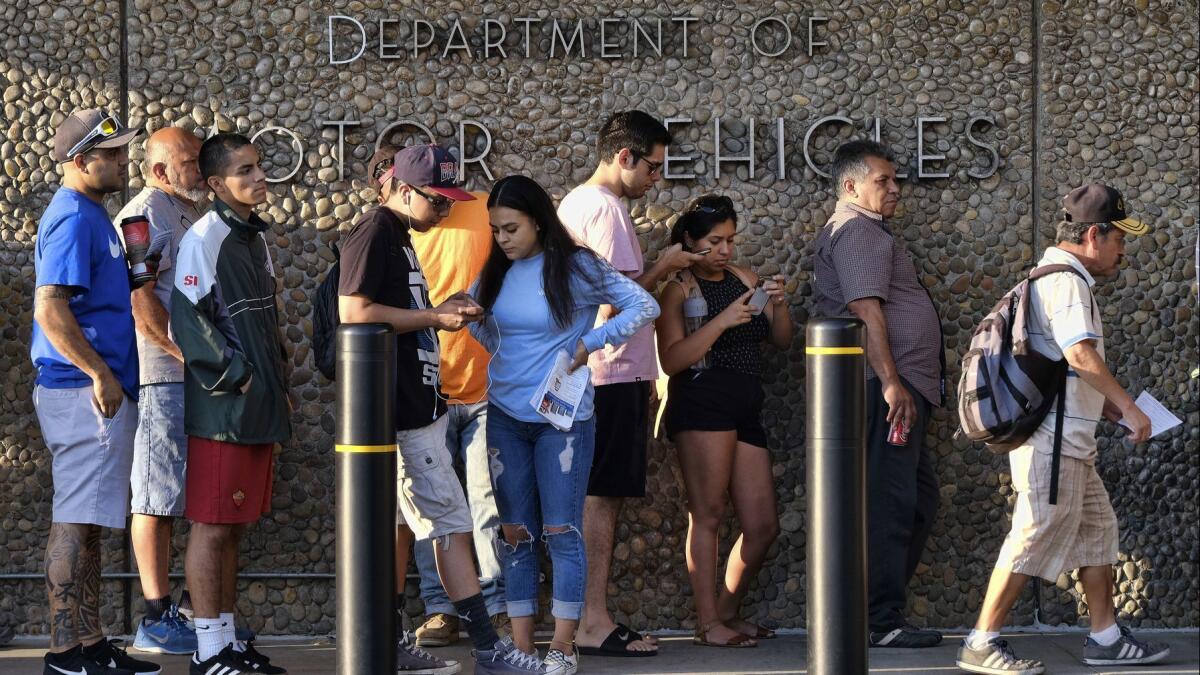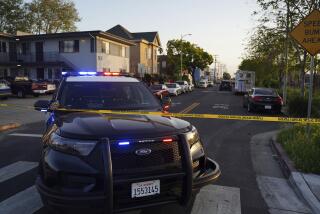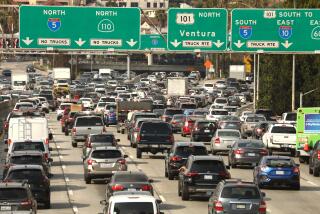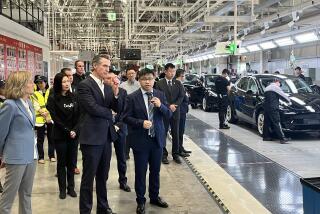California DMV leadership overhauled over long lines and poor service

Gov. Gavin Newsom on Tuesday announced a shake-up of the state Department of Motor Vehicles, appointing its third director in a year and backing an overhaul of the agency’s practices in response to widespread public complaints of poor service, including hours-long wait lines and a botched “motor voter” program.
“I recognize that people are outraged by their experience at DMV,” Newsom said at a Capitol press conference on Tuesday. “I am not naive about the challenges at the DMV. The technology is byzantine.”
Newsom appointed tech industry entrepreneur Steve Gordon of San Jose as director of the DMV. His first job will be overseeing changes being executed by a so-called strike team appointed by the governor in January to address shoddy services and outdated technology at the agency.
The task force’s recommendations included revamping the DMV’s technology, training and processes.
The DMV became the center of controversy last year when customers complained of having to wait four to six hours at field offices as the agency deals with complications caused by Real IDs, a new driver’s license and identification card design required for airline passengers starting in late 2020.
The delays were worsened by frequent computer crashes blamed in part on faulty and outdated computer systems.
The strike team report released on Tuesday said that in August, average wait times were nearly two hours in the state’s largest DMV offices, and 16% of all customers experienced wait times of more than two hours.
“It is clear that changes are essential if the DMV is to meet its most immediate challenge: successfully meeting increased demand for REAL ID driver licenses before the October 1, 2020 federal deadline without the surge in wait times that customers experienced in field offices during the summer of 2018,” the report said.
The department has also struggled in recent months with the implementation of an automated voter registration system. DMV customers are now registered to vote, or have their existing voter registration updated, unless they opt out of the process.
A Times investigation found a litany of software problems and staff errors led to the “motor voter” system wrongly issuing tens of thousands of voter registration documents last year — and that the project was attacked by international hackers just weeks before it was launched in April of last year.
An audit of what went wrong in the creation of the voter program is expected to be released as soon as the end of this month. Asked Tuesday about the motor voter project, Newsom said his strike team has already anticipated some of what that audit is likely to show.
But he declined to say whether the investigation will produce new information about the instances in which some 1,500 non-citizens who visited the DMV — people with legal status in the country and holding traditional driver’s licenses -- ended up receiving voter registration materials.
“All of those things happened, not on my watch. But I’m responsible for fixing them,” he said.
Newsom said some 28 million Californians might apply for Real ID licenses in the next year, which he said could swamp offices again unless changes are made. And the governor pointed out one sign of the seriousness of the problem: DMV computers crashed briefly Tuesday just before his press conference.
The proposals were met with skepticism from some longtime critics of the DMV, including Republican Assemblyman Jim Patterson of Fresno.
“After all the hype and hoopla, we’ve just been told by Gov. Newsom that it’s bad, it’s going to get worse and there’s nothing they can do about it,” Patterson said. “Millions of Californians are going to face exploding wait times again. This isn’t re-imagining a new DMV, it’s making excuses for the old one.”
Former Gov. Jerry Brown began making changes at the DMV last year, beginning an expansion of its budget and hiring. This year Newsom allocated an additional $240 million to the DMV and authorized the hiring of 1,800 people, most temporary, during the next year.
Newsom said the first goal is to stabilize and modernize the agency, but said large IT projects are likely going to take years to complete.
The strike team embarked on a redesign of the DMV’s website to be more user friendly, approved the acceptance of credit cards at some field offices starting in September and streamlined the customer experience, creating a new personalized mailer for customers to help them get through their five-year and 10-year license renewals.
The DMV has also begun offering more kiosks and “pop-up” services at other state buildings, and more training is in the works for field personnel to use tablets to serve large crowds showing up for new driver’s licenses.
The strike team also oversaw the approval of contracts to upgrade the agency’s computer systems.
“Over the next 12 months, the DMV will undergo a series of hardware and software upgrades, streamline operational activities required to stabilize the environment in the event of an outage, roll out monitoring tools to better manage and track critical systems and explore network architecture alternatives to reduce connectivity issues and minimize risk of DMV field office system outages,” the strike team report said.
The state agency is also developing a marketing campaign to educate the public about the Real ID requirements and how to get smoothly through the process.
“Even with all of the Strike Team’s efforts, the department will still likely struggle to meet the expected demand,” the report concluded. “However, the Strike Team believes the department is better prepared to deal with unexpected challenges and is on a path toward successfully serving the people of California more effectively and efficiently.”
Gordon — one of five new DMV appointees announced on Tuesday — takes over from acting director Kathleen Webb, whom Newsom named in January when he appointed the strike team to overhaul the DMV. Webb becomes a deputy director of DMV. Previous DMV director Jean Shiomoto retired in December amid the controversy over long wait lines and errors in the motor voter program that has registered millions of new voters.
Gordon, 59, was a managing partner at ZTransforms for the last two years, and served previously as vice president of global service operations at Becton, Dickinson & Co., was principal consultant at SteveOnService and was co-founder of MySeatFinder. He also worked as president of technical services at Cisco Systems from 1993 to 2011, and he was an auditor for San Diego County from 1983 to 1984.
Newsom praised Gordon for his experience with high-tech companies.
“We have got a technology expert,” the governor said. “This is what he did at Cisco.”
Gordon said he decided to apply for the job after a frustrating experience of his own with the DMV.
“I know we have tremendous work ahead of us,” he said. “We will not modernize the DMV overnight.”
Gordon’s annual state salary will be $186,389, and his appointment must be confirmed by the state Senate.
Times staff writer John Myers contributed to this report.
More to Read
Start your day right
Sign up for Essential California for news, features and recommendations from the L.A. Times and beyond in your inbox six days a week.
You may occasionally receive promotional content from the Los Angeles Times.







